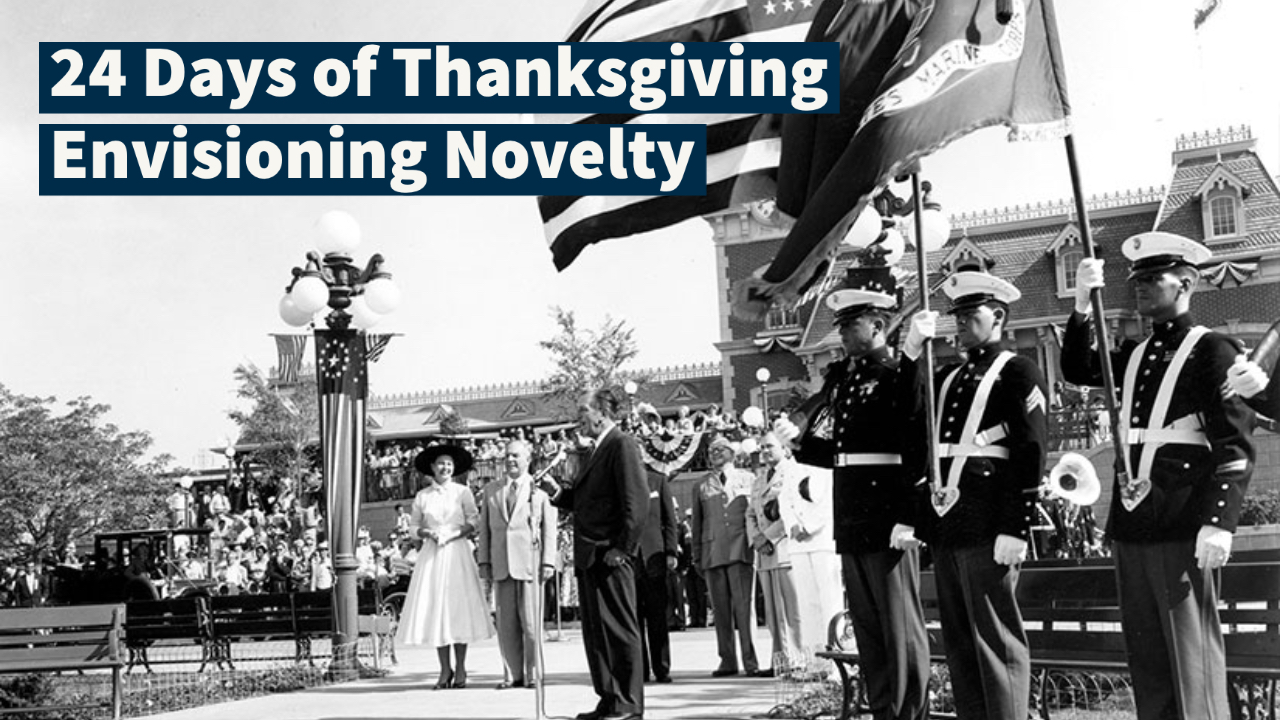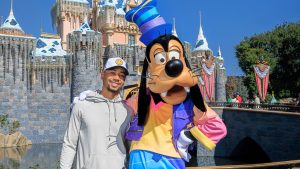As Mr. Daps highlighted yesterday, Walt Disney came up with the idea of Disneyland as he was sitting on a bench in Griffith Park, watching his daughters riding the carousel and dreaming of a place where families could enjoy themselves together. Of course, this was only the beginning of Walt’s great vision, not the end. A lot of planning and intentionality went into creating this new kind of multi-generational playground. So why do Disney Parks feel so different from other theme parks, even today? Why do guests (like me) feel such a strong pull back to the Happiest Place on Earth to visit time after time? I believe it’s because of the novelty and sensory richness of the Disney Parks. I’m so thankful Walt Disney and his team incorporated brain science concepts to make their parks attractive, effective, and memorable.
About five years ago, I had the opportunity to take a neuroscience class. One of the concepts that struck me was novelty—how the brain latches onto things that are different and unexpected, outside the status quo. Humans’ survival as a species can be tied to our ability to recognize novel things and react spontaneously, like when a loud noise from an empty room causes a rush of adrenaline that jolts us into action. Our brains work behind the scenes to spot things that are out of the ordinary. The more novel things we experience, the more engaged we are. We’re also very good at making lasting memories when our five senses are involved, especially when there is also an emotional connection. This is why a favorite song or smell can take us back to a specific moment in time. Short-term memories need the reinforcement of emotion to be transferred into long-term memories. Things that don’t elicit such a strong reaction will likely be lost.
If you’ve been to a Disney Park before or have heard someone describe a recent trip, what were the most memorable parts—the things that come to mind without much prompting? These highlights probably included interesting sights, sounds, smells, or sensations, right? You think of the scent of the water in Pirates of the Caribbean or the sound of “it’s a small world” and suddenly you’re there. A hug from Mickey Mouse takes you back to when you were small and met him for the first time. Remembering your favorite Disney snacks brings the flavor of a churro to your tastebuds and the smell of freshly-made buttery popcorn to your nostrils. These memories are so strong because they are rich in sensory triggers. Few other theme parks are as painstaking in creating such a complete and consistent experience.
Walt Disney’s goal was always to affect people emotionally, to make them laugh, think, or cry. Walt was a consummate storyteller and wanted visiting his parks to feel like walking into one of his movies. Every detail had to be cohesive and clear. It wasn’t enough to build rides without context. Instead, creating distinct lands gave attractions a sense of place and organization. Rich and novel details, like themed background music, kept the brain intrigued. Clean sightlines and tidiness maintained the immersion, without obstructions or trash to detract from the experience. Disney understood the balance of novelty—that our brains like patterns but are drawn to the unusual. As a result, elements that break the illusion are only placed intentionally to create interest.
Walt had it right in his dedication speech for Disneyland. He identified key neural elements that lead to the creation and retention of memories. He also understood that powerful images create strong emotions. After all, we remember events that make sense, have meaning, and generate emotion.
To all who come to this happy place; welcome.
Disneyland is your land. [guest ownership and meaning]
Here age relives fond memories of the past… [emotions and nostalgia]
and here youth may savor the challenge and promise of the future. [new and novel, family connection]
Disneyland is dedicated to the ideals, the dreams and the hard facts that have created America… [sense-making, rooted in a place]
with the hope that it will be a source of joy and inspiration to all the world. [positive emotion]
– Walt Disney at the dedication of Disneyland on July 17, 1955
As the 2015 television spot during Disneyland’s 60th Anniversary Diamond Celebration said, “come remember that feeling; come feel forever young.” Disney Parks do an exceptional job at triggering emotions and creating novelties that lead to life-long memories. I am so thankful that I, like so many other Disney fans, can return to such engaging places for visit after visit. My “happy place” is one that Walt created to be endlessly enjoyable for anyone of any age. Thankfully, that vision has stood the test of time because of the brain science concepts it incorporated. Here’s to many memorable and inspiring Disney visits for you and your loved ones in the future!
During Daps Magic’s journey through the 24 Days of Thanksgiving, we’d love to hear your thoughts! What are some of your most beloved Disney Parks memories? We’ve experienced that thankfulness can absolutely improve your outlook, so please feel free to dive deeper in the comments below. Happy Thanksgiving to you and yours!

Day Three: Envisioning Novelty – 24 Days of Thanksgiving
Comments
Geeks Corner
Recent Posts
- Peter Schneider | DISNEY THIS DAY | November 10, 1950

- After Winning World Series, Dodger’s Player Celebrates Daughter’s Birthday at Disneyland

- Carousel of Progress – A Month of Thanksgiving

- The Walt Disney Family Museum to Present ‘Jim Henson’s Sam and Friends Scripts with Author Craig Shemin and Special Guest Dave Goelz’

- Disney Accelerator’s 2025 Demo Day Returns to Walt Disney Studios Lot

